
Goodbye, So Long
July 1, 2012
Nos falamos galego
July 1, 2012Nobody gets out alive. It’s not a reality that humans like to look at, as a general rule. And for many of us – particularly in the developed world – it’s pretty easy to avert our eyes from that stark reality For much of humanity, though, it’s a fact that’s up in their grill pretty regularly. And that’s true even in some pockets of the First World. Generally the only ones acquainted with that landscape are its denizens. But a few know it intimately while yet not inhabiting it. Jim Turner describes what he has seen there – of violence, of despair, and of hope – with an unflinching gaze.
By Jim Turner
Working the trauma service can be feast or famine. Gunshot wounds, stabbings, auto accidents; their arrival at the hospital is sporadic and unpredictable. The ambulances are coming fast, dropping the latest shattered body off; or you are insufferably bored. It depends on the day of the week, the time of day, the season of the year. We joke it depends on the phase of the moon. It is odd to be dependent on random acts of violence somewhere in the city for something to do. But it’s just the way the trauma service works. You go about other routine tasks and wait for human disaster to arrive on your doorstep. There is a lot of disaster here.
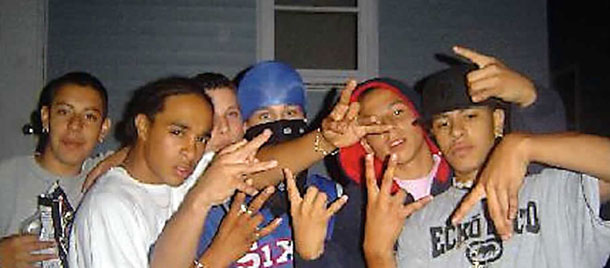
St. Louis – Gangs
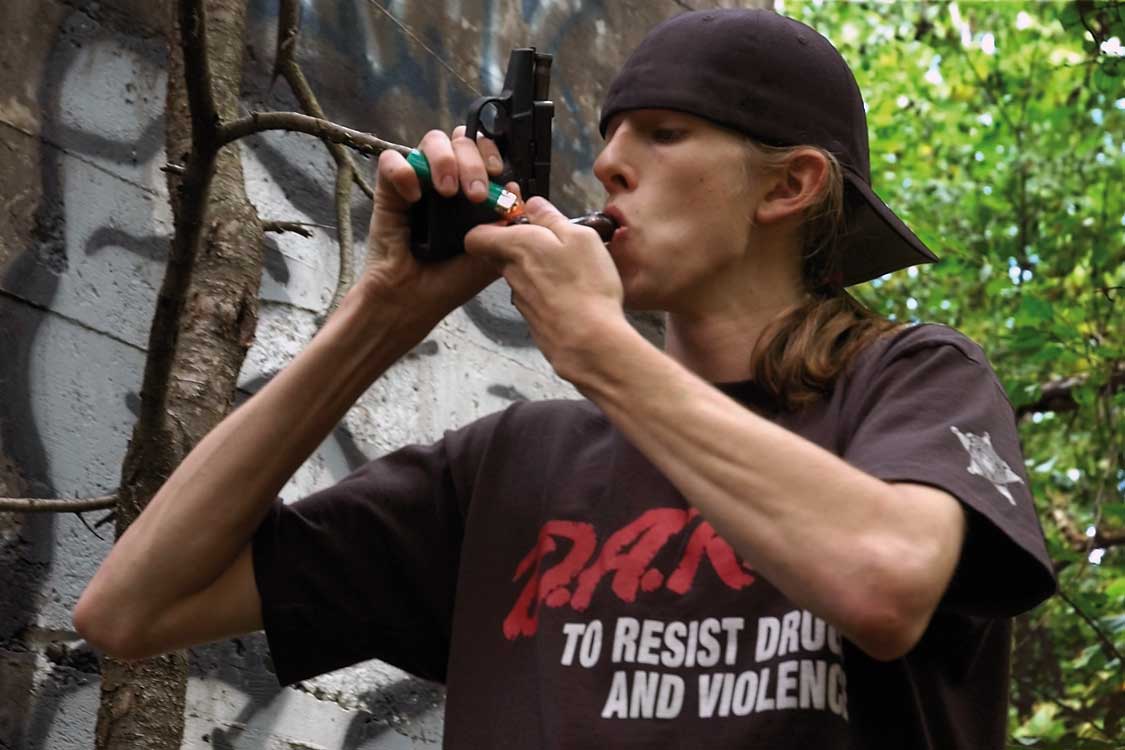
St. Louis – Gang member
St. Louis, Missouri, I mean. It can be a dangerous city, depending on what part you are in. It is one of those middle American cities with a poor underclass. Detroit, Chicago, Memphis – they all have it. Lack of productive outlets and the innate human urge to “make something of oneself” lead young black men into the drug trade. With drugs come guns and violence. Short of warfare, this is the most violent activity humans engage in. St. Louis is a little different from other cities I am familiar with. St. Louis also has East St. Louis. It’s actually a different municipality across the Mississippi river in Illinois; but it’s close enough and culturally similar enough to be thought of as belonging to the greater St. Louis area. East St. Louis has no police force. Enough corruption in city hall and a couple of big-time legal settlements against the city drove the area into bankruptcy. They had to sell city hall to settle one of the judgments. No city government means no police force. The state patrol cruises the highways but they never enter the city. Not their problem. Without a police force, what was already a crime-filled enclave quickly turns into something like Dante’s Inferno. Prostitution, murder, muggings are all out on open display, day or night. Without knowing your way around, you take your life into your own hands, just by strolling through downtown. The liquor stores, of which there are many, function like bank vaults. Instead of picking your selection off the shelf and taking it to the cashier, you go to a guy behind bullet proof glass and tell him what you want. He fetches it off the shelf behind him and gives it to you through one of those little one-way rolly drawers built into the counter. But not before you give him your money. I tell this to people from other parts of the country and they don’t believe me. That there is a lawless, Western-frontier-like city in the US, akin to Mogadishu, is disturbing news. The most unbelieving are from the country club set.
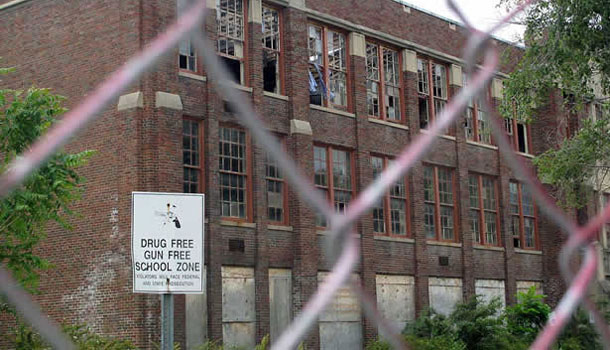
East St. Louis – school
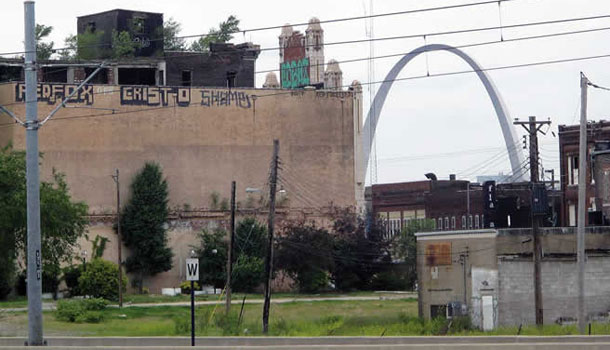
East St. Louis – suburb
The best trauma comes from East St. Louis. By “best”, I mean the worst. When the drug dealers and/or gang-bangers shoot, they mean to kill, not merely to wound or intimidate. That means a shot or multiple shots to the head and shots to the chest, aimed at the heart. Depending on the level of the drug deal, the weapons used can be pretty sophisticated – customised assault weapons, basically. Tricked-out Glock 19s, Bren Tens, Uzis, you name it. Sometimes there is a gang-related shooting and the victim manages to make it to the hospital alive. If we are at all successful at keeping the guy alive, the fact that the victim isn’t quite dead makes it back to the rival gang responsible for the shooting. The gangs scan the newspapers for the name of the shooting victim to make sure they got their man. If we do our jobs well and the victim lives, the rival gang cruises the hospital looking to finish the job. Roving bands of young black men in the hospital is a sure sign there was a recent gang-related shooting. They aren’t there to deliver flowers. To combat this, the trauma service assigns an alphanumeric designation to the victim and we use that rather than the victim’s name. Golf one, foxtrot twelve, etc. The doctors use it along with the nurses. It’s on the hospital chart and lab slips. We hide the patient from plain sight. Letting your patient get shot again while he is still in the hospital is not considered good form. I am, of course, describing life in an inner city teaching hospital. This shit doesn’t happen out in the suburbs.
Over time, a weird sort of ecology develops between the gangs and the hospital. Enough gang members get shot and go to the hospital for the results of the shooting and subsequent medical care to make an impact back in the neighbourhood. Some victims make it back and some don’t. The “some don’t make it back” part is obvious. They’re dead. The ones that do get back are a different story. With the use of high-powered weapons, enough damage is inflicted on the internal organs that no amount of modern, high-tech medical care can return what was a previously healthy young man to what medical people describe as “functional”. In other words, the ones that do make it back are sometimes too mangled to ever fully recover, or are in some state of intermediate medical care and don’t quite act or look like they used to. This results in a bizarre combination of positive and negative feedback to the hospital. New shooting victims come to the hospital making specific requests about how we deal with their trauma. The new victim has seen this enough times to know what to ask for. They do it as if they were ordering off a Chinese menu: one from column A and two from column B, but nothing from column C. The most frequent “nothing from column C” request is: “Not the bag doc, anything but the bag”, the bag in question being an ostomy bag.
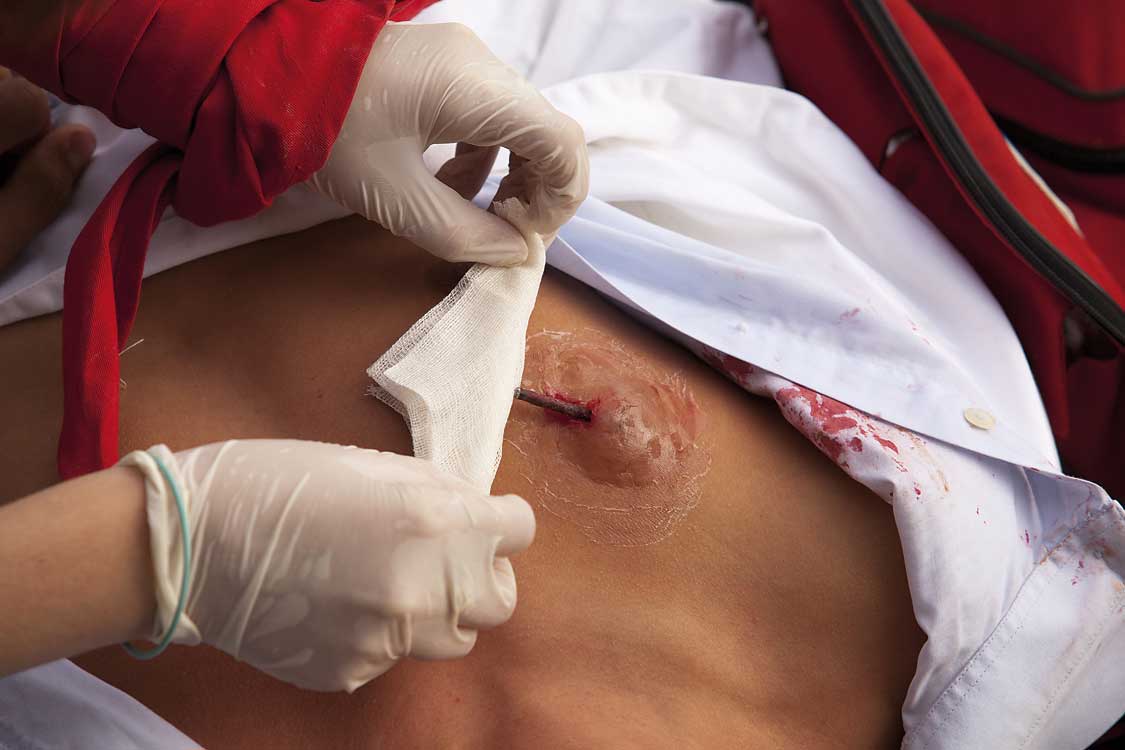
St. Louis – hospital
A bullet wound or stabbing to the abdomen often results in damage to the intestine. To repair the damage, the intestinal contents have to be re-routed to a surgically created opening in the abdominal wall called an ostomy. The ostomy, in effect, becomes the patient’s new anus. The intestinal contents are collected in a bag which the patient has to empty periodically, when it becomes full. The diversion of intestinal contents can sometimes be reversed when the patient heals. Sometimes not. Going back to the neighborhood with “the bag” can be problematic, especially when it comes to getting women – having faeces dangling at your side makes it tough to score points.
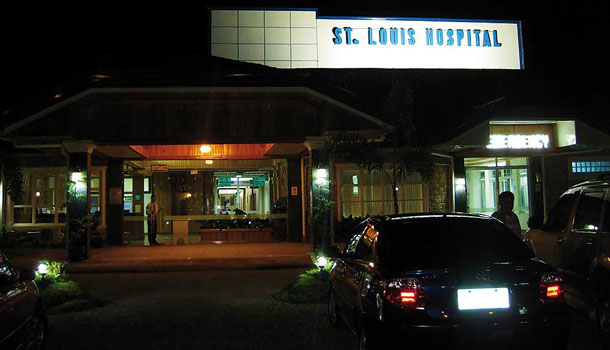
St. Louis – hospital
Medical people who see this, day in and day out, over months or years become emotionally immune to it. It’s just part of the job, we tell ourselves. The emotional immunity allows us to function and do the work. Every once in awhile something comes in that is just so awful, it sticks with you for a time. For me these are the botched suicides. Some teenage girl making a half-hearted appeal for help by abrading her wrists with a butter knife isn’t it. It is the truly despondent, desperate people taking a gun to their head and missing. The worst messes are made with shotguns. Shotguns are meant to take a duck or a goose out of the air at 100 feet. At close range, or as is frequently the case in suicides, directly at the end of the barrel, the blast of shot acts with terrific force, shearing flesh and bone away in large chunks. Applied in the correct fashion through the brain, this leads to instant death. Incorrectly applied, it leads to a shearing away of a part of the scalp and skull, and maybe a part of the brain. Or to taking the entire face off. One fellow of recent memory did just that. He put the barrel of the gun under his chin rather than in his mouth. The blast was angled such that it took his lower face off: his lower jaw, part of his upper jaw, his tongue, his nose, part of the soft tissues of his throat. He had one big hole where his face used to be. His eyes, ears and brain, however, were intact. After the initial shock wore off, he was fully aware of what he had done to himself. He couldn’t speak, of course, but he made it clear he wanted to be put back together. It was a given we would do that. We are doctors and that’s what we do – if the insurance companies let us. My boss on the trauma service spent hours on the phone with the man’s insurance company, bickering over dumbass things like whether we could get a psychiatric consult. The company’s point was: “Of course he’s depressed. You don’t need a psychiatrist to tell you that.”
“Yes, but… we would like to know if he is likely to make another attempt at killing himself before the plastic surgeons spend $200,000 and several hundred man-hours constructing him a new face.”
There are, of course, some parts of the brain that are more “necessary” than others. Victims of botched suicides sometimes get into the brain with their bullets, but this is no guarantee of death. The frontal lobes are, in this regard, somewhat expendable. If, say, a person puts the barrel of a handgun in the mouth and the angle of travel for the bullet is, straight up, the bullet passes through the frontal lobes and only the frontal lobes. This results in the unintended frontal lobotomy but not death. To get to death, the bullet has to pass through the mid-brain or brain stem, neither of which you can live without. They are where the vital functions live, like breathing and making your heart beat correctly. If there is some grace to come out of such situations, it is the spouse that refuses to desert the despondent victim when they have every reason to flee their mate in horror. It brings me close to tears to see this.
Topics like the above are often difficult to talk about with many lay people. Doctors and nurses talk about this stuff all the time amongst ourselves, but try not to scare the larger public with it. It doesn’t really go over so well at cocktail parties. But one “class of people” I’ve found outside medicine who can consistently deal with these realities are those with religious training – those who deal with invisible wounds.
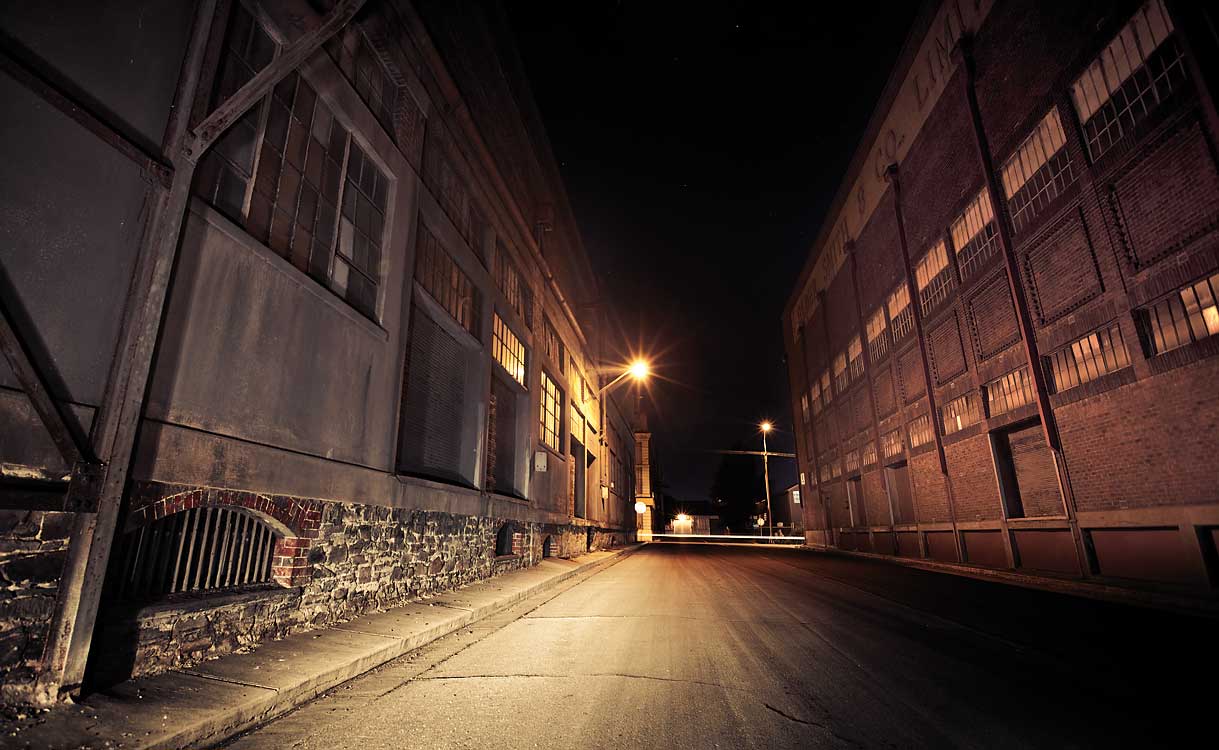
St. Louis – Night shots: city, street, hospital
The emotional and psychological damage to victims of trauma and their families can produce as raw a wound as any inflicted on the body. It is a separate anguish from physical pain and requires a different sort of healing. I have never been much of one for religion, but one thing that has impressed me over the years is the ability of spirituality to begin to carve a pathway into the emotional healing that necessarily must accompany the physical sort. The world’s great religions: Islam, Christianity, Judaism, Hinduism, Buddhism are, in their way, vast intellectual achievements too; they do, indeed, have a verifiable way to deal with traumatic suffering at an emotional level. And what I mean by “deal with” is offering the victims of acts of violence – those whose bodies have been torn apart, never to be the same – some comfort, some consolation, some kind of emotional resurrection. “That God so loved the world, He gave his only son…” is an idea that a mind wracked with pain can grasp and cling to when there isn’t anything else. It isn’t for everyone, but when it does take hold, I have been much impressed by religion’s ability to touch people in this sort of need. They offer insight into the meaning of suffering and how to deal with it. How people find religious insight helpful to them in the midst of overwhelming grief has been as much of an education for me as anything I ever learned in medical training about stopping the bleeding caused by the bullets.




